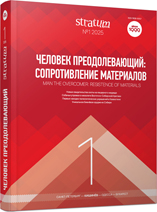Мир человека среднего палеолита Донбасса и Приазовья
The World of Middle Palaeolithic Humans of the Donbass and Azov Regions
Author(s): Aleksandr Victorovich Kolesnik, Vadim V. Titov, Alexei Yurievich Danilchenko, Pavel G. Panin, Evgeny A. KonstantinovSubject(s): History, Archaeology, Prehistory
Published by: Издательский дом Stratum, Университет «Высшая антропологическая школа»
Keywords: Donbass; Azov region; Middle Paleolithic; raw material strategies; bison hunters; Neanderthal type of adaptation;
Summary/Abstract: The Middle Paleolithic, as an epoch in the development of human society, was characterized by the homeostasis between the socio-cultural systems and their natural environments. Middle Paleolithic сommunities settled in the areas with the most favorable combinations of basic resources. At that time, almost the entire territory of the southern part of the Russian Plain, including the Donbass and Azov regions, was dominated by steppe landscapes. In the interglacial period, soils similar to modern ordinary Calcic Chernozems developed; in the interstadial periods, more arid Kastanozems soils prevailed. During the glacial stages, the soil cover was represented by underdeveloped semi-desert paleosols. The Middle Paleolithic period witnessed the consecutive existence of two faunal complexes: the Khazar and Mammoth ones. Bison was the main object of hunting for the Middle Paleolithic inhabitants of the region. Of particular importance among the basic resources were also stone raw materials. The region is rich in Upper Cretaceous rocks with flints. In addition, there are also Paleogene quartzites. The overwhelming majority of the Middle Paleolithic sites of the region is situated in direct proximity to sources of flint.
Journal: Stratum plus. Археология и культурная антропология
- Issue Year: 2025
- Issue No: 1
- Page Range: 125-151
- Page Count: 27
- Language: Russian
- Content File-PDF

